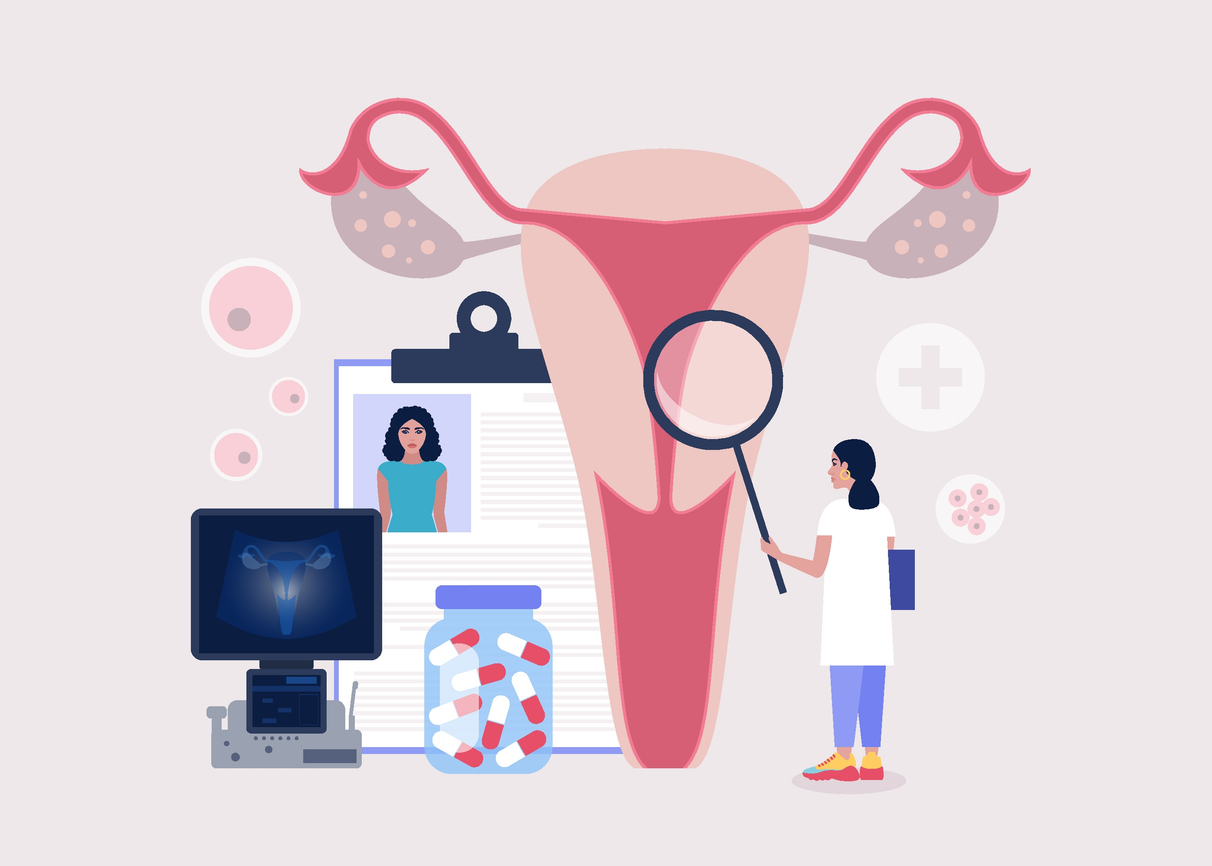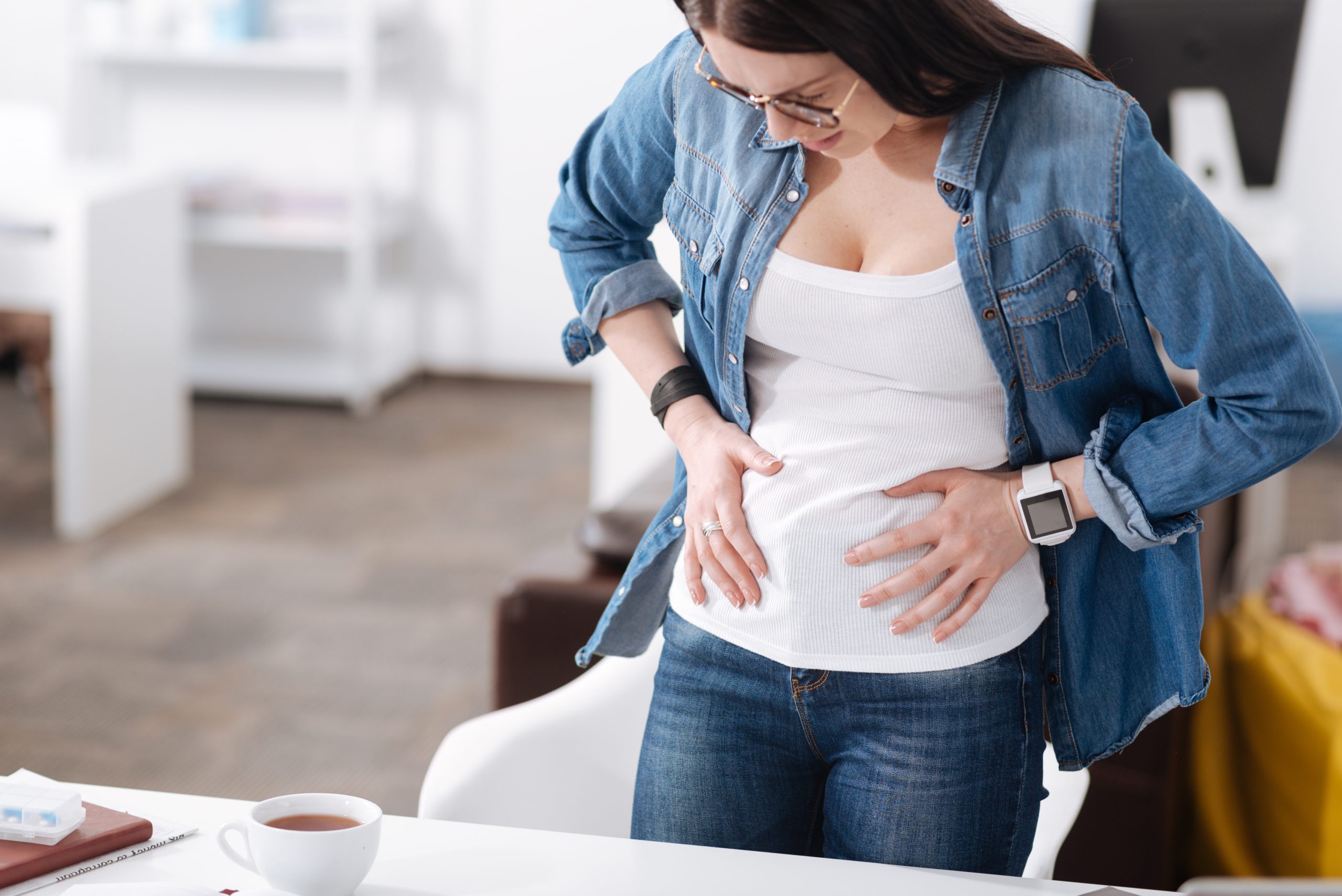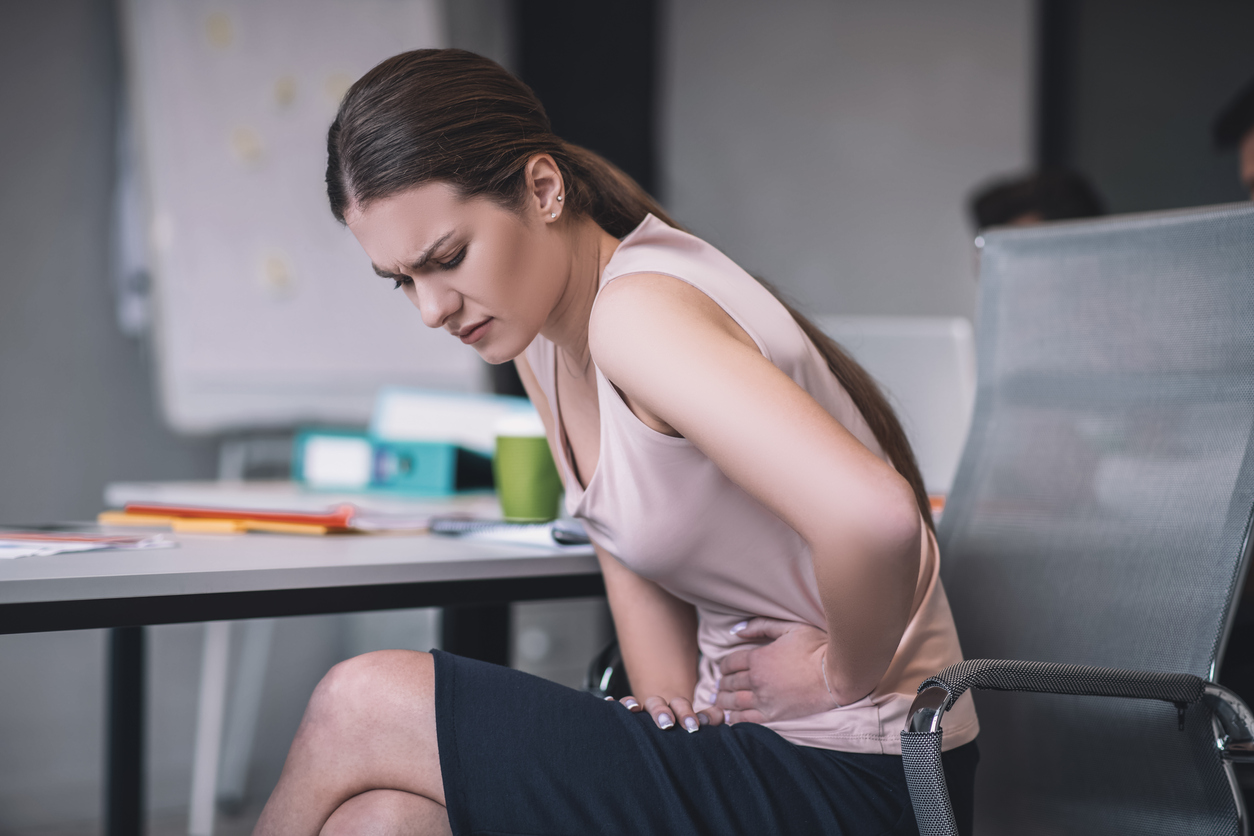
How to Prevent Endometrioma Cysts
Endometrioma cysts, often dubbed as ‘chocolate cysts’ or “endometrioma”, pose a significant health issue for many women worldwide. Understanding how to prevent endometrioma cysts is crucial for maintaining optimal reproductive health. This comprehensive, empathetic guide will walk you through the essentials of endometrioma prevention, demystifying complex medical terms and offering practical advice.
Understanding Endometrioma
Endometrioma, a form of endometriosis, is a condition where tissue similar to the lining of the uterus grows outside the uterus, primarily on the ovaries. This growth often results in cysts filled with blood and tissue products, referred to as ‘chocolate cysts’ due to their dark, chocolate-like appearance. Understanding this condition is the first step in learning how to prevent endometrioma cysts.
Symptoms of Endometrioma
Endometrioma can manifest in a variety of symptoms, some of which are debilitating. Common symptoms include severe menstrual cramps, chronic pelvic pain, discomfort during intercourse, painful bowel movements or urination during menstruation, and fertility issues. In some cases, endometrioma may be asymptomatic, discovered only during a routine check-up or fertility assessment.
Causes of Endometrioma
The exact cause of endometrioma remains a subject of ongoing research. Some theories suggest retrograde menstruation, genetic factors, hormonal imbalances, and immune system dysfunctions. Surgical procedures in the abdominal area may also inadvertently transport endometrial tissue to other parts of the body, leading to endometrioma.
Who is at Risk?
While any woman who menstruates can develop endometrioma, certain factors increase the risk. These include a family history of endometriosis.
How is Endometrioma Diagnosed?
Doctors diagnose endometrioma through several methods, including pelvic examinations, imaging tests like ultrasounds or MRIs, and laparoscopy – a surgical procedure that allows for the visual inspection of pelvic organs. A definitive diagnosis often requires a biopsy, where a small sample of tissue is examined under a microscope.
Why Endometrioma Causes Health Problems
Endometrioma can lead to several health problems, including persistent pain, inflammation, and fertility issues. These cysts can grow, bleed, and cause scarring, leading to complications such as blocked fallopian tubes, adhesions (tissues that bind organs together), and issues with the intestines and bladder.
Preventing Endometrioma: An Overview
While endometrioma cannot be primarily prevented, certain interventions can reduce the risk of progression and recurrence after surgery. These interventions mainly focus on removing the endometriomas through surgery, lowering estrogen levels in the body, and increasing the impact of progesterone-like hormones.
Hormonal Control
Hormonal birth control methods, such as pills, patches, or rings with lower doses of estrogen, can help regulate the menstrual cycle and slow the progression of endometrioma. Intrauterine devices (IUDs) that release hormones may also be beneficial in reducing pain and bleeding.
Lifestyle Factors
Maintaining a healthy lifestyle can influence natural estrogen levels and potentially reduce the risk of endometrioma regrowth and progression. Regular exercise helps decrease body fat, which in turn lowers estrogen levels. Limiting alcohol and caffeine intake can also help, as excessive consumption of either can raise estrogen levels.
Medical Management
For those not trying to conceive, hormonal birth control is often the first line of treatment to manage symptoms.
Surgical Treatment
Excision surgery is usually considered the gold standard and the only treatment that truly removes the endometrioma lesions. The procedure involves removing the endometrioma while preserving as much healthy ovarian tissue as possible. Following surgery, hormonal treatment is typically resumed unless pregnancy is desired.
Complementary and Alternative Medicine (CAM) Therapies
In addition to conventional treatments, some individuals find relief from endometrioma symptoms through complementary and alternative medicine (CAM) therapies. These can include acupuncture, chiropractic, dietary changes, herbs, or supplements. It’s essential to discuss these approaches with your healthcare provider to ensure they’re safe and suitable for your specific needs.
In conclusion, while endometrioma cannot be prevented, understanding the condition, its risk factors, and potential treatments allows women to better manage their reproductive health. Regular check-ups, open communication with healthcare providers, and proactive lifestyle changes are all crucial in dealing with endometrioma and mitigating its effects on one’s life.
References:
https://my.clevelandclinic.org/health/diseases/22004-ovarian-endometrioma
https://www.ncbi.nlm.nih.gov/pmc/articles/PMC7754428/
Chocolate Cysts: Everything You Need To Know
Management of ovarian endometrioma
https://www.womenshealth.gov/a-z-topics/endometriosis

Do Endometriomas Automatically Make You Stage 4?
Endometriosis, a complex and often painful condition, is characterized by the growth of endometrial-like tissue outside the uterus. This tissue, which differs molecularly and in behavior from the lining of the uterus, can cause severe discomfort and various health complications. One such complication is the formation of endometriomas, sometimes referred to as “chocolate cysts”, which predominantly affect the ovaries. They’re named for their dark, chocolate-like appearance, resulting from the accumulation of old blood within the cyst.
But does the presence of endometriomas automatically classify a patient as having stage 4 (also designated Stage IV) endometriosis? This primer delves into the stages of endometriosis, the nature of endometriomas, and the relationship between the two.
Understanding Endometriosis and Its Stages
Endometriosis is categorized into four stages according to the American Society of Reproductive Medicine (ASRM), with each stage reflecting the location, extent, and superficial vs deep endometriosis implants, presence and severity of adhesions, and the presence and size of ovarian endometriomas. The current revised ASRM system (rASRM) was adopted in 1996 and remains the most common staging system. Unfortunately, there is a lot of inter-observer variation, so reproducibility of the score is poor. It also is limited because it mixes visual staging and actual biopsy proven staging. So, one surgeon might call it one stage and another surgeon may arrive at a different stage. In addition, rASRM stages do not correlate well with degree of pain and does not fully consider presence and location of deeply infiltrating endometriosis (DIE).
For all of the above reasons, other staging systems have been introduced. The ENZIAN system, which more robustly considers the location and depth of DIE, was intended to supplement the rASRM system but due to numerous misunderstandings it is not widely used. The endometriosis fertility index (EFI) focused mainly on predicting pregnancy rates. The American Association of Gynecological Laparoscopists (AAGL) proposed a comprehensive system to try to address pain, infertility/subfertility, and surgical excision difficulty. However, it was only recently published in 2021, continues to have limitations of not addressing upper abdominal and extra-abdominal disease, and is not yet widely accepted.
So, we are left with the rASRM system in terms of best communicating surgical outcomes, treatment planning and comparing results. The Stages are based on a numerical score and are as follows:
Stage I: Minimal Endometriosis
In stage I, there are only a few small clumps of endometriosis tissue, also known as implants. These may be found in the tissue lining the abdomen or pelvis.
Stage II: Mild Endometriosis
In stage II, there are more implants than in stage I, which may be either superficial or deep, with mild adhesions. Stage II is typically characterized by more extensive endometriosis with deep implants present.
Stage III: Moderate Endometriosis
In stage III, deep implants of endometriosis tissue are present. Adhesions may be dense rather than filmy and thin. As a result, endometriosis at this stage is more widespread than in stage II.
Stage IV: Severe Endometriosis
Stage IV, or severe endometriosis, is typically associated with numerous deep endometriosis plaques, large endometriotic cysts on one or both ovaries and many dense adhesions. There is usually also extensive scar tissue in the abdomen and signs of intense inflammation and scarring or fibrosis.
Read More: Can Endometriosis Cause Bowel Issues?
The Nature of Endometriomas
Endometriomas are endometriosis cysts that primarily affect the ovaries. Endometriomas can occur on one ovary or both and affect between 20-40% of patients with endometriosis, many of whom also have stage III-IV disease. The origin of endometriomas is incompletely known, just like endometriosis in general, but likely multifactorial in principle.
Endometriomas and Stage 4 Endometriosis: The Connection
The question is, “Do endometriomas automatically make you stage 4?” The answer is not straightforward. The presence of ovarian endometriosis or an endometrioma of course contributes to the staging of endometriosis. Each ovary can contribute between 1 and 20 points, varying based on tiny implants to endometriomas greater than three centimeters in size. However, the presence of endometriomas alone does not automatically classify a patient as having stage 4 endometriosis, which requires 40 or more points. In addition to ovarian endometrioma, presence or absence of surrounding adhesions also contributes to the point total. Also, larger endometriomas are often associated with extensive deep pelvic disease. So, in general, small endometriomas may not mean Stage 4. But larger ones are quite likely to mean Stage 4 disease is present.
Read More: What Does Bowel Endometriosis Feel Like? Understanding the Pain and Symptoms
Treatment Options for Stage 4 Endometriosis and Endometriomas
The treatment of stage 4 endometriosis and endometriomas is complex and highly individualized. It depends on various factors, including the patient’s symptoms, age, desire for pregnancy, and overall health.
Treatment options for stage 4 endometriosis can include a combination of hormonal therapy, pain management, and surgery. While hormonal therapy may help control pain it is highly unlikely to shrink endometriomas, let alone resolve them, or effectively treat endometriosis. This is due to the relative resistance of endometriosis to progesterone and progestins and incomplete dependence on estrogen. There are major potential health risks and this should be part of the discussion with your chosen endometriosis specialist. Pain management strategies include over-the-counter and prescription medications, as well as physical modalities like pelvic floor therapy and transcutaneous electrical nerve stimulation (TENS) units. While this can help manage chronic pain associated with the condition this does not treat the root cause, which is endometriosis and resulting fibrosis.
Minimally invasive surgery under the care of an extremely well trained surgeon is the cornerstone of advanced endometriosis treatment. This is not surgery that should be undertaken by novices or most general gynecologists. The reason is mainly due to the fact that anatomy can be severely distorted, making surgery very challenging in terms of achieving excision while limiting complications which can be life threatening or at least very morbid.
Specifically regarding endometriomas, endometriomas require excision, not drainage. Draining is very ineffective and the endometrioma can soon recur. Ideally, any surgical spillage should be minimized because it is not just old blood but also potentially endo-related stromal stem cells, which can implant and grow elsewhere. Overall, the planning and timing of surgery varies significantly. Often decisions have to be made based on whether or not fertility is the main concern or pain, or both in equal degrees. Surgical planning is complex and requires a master surgeon for optimal outcomes. Especially for the management of Stage 4 endometriosis and endometriomas a highly trained and skilled endometriosis specialist and surgeon is mandatory for your success.
Read More: Life After Endometriosis Surgery: A Comprehensive Guide
References:
Risk factors for coexisting deep endometriosis for patients with recurrent ovarian endometrioma
Diagnosis and management of endometriosis

Understanding and Managing Endo Belly: A Comprehensive Guide
Endo belly is a term used to describe the painful abdominal bloating experienced by individuals with endometriosis. It is characterized by severe distension and discomfort, often resembling the appearance of pregnancy. This article aims to provide a comprehensive guide to understanding and managing endo belly, including its causes, symptoms, and treatment options. We will delve into the underlying mechanisms of endo belly, explore various management strategies, and discuss the importance of seeking medical advice for an accurate diagnosis and personalized treatment plan.
What is Endo Belly?
Endo belly refers to the extreme bloating and distension of the abdomen in individuals with endometriosis. Unlike mild and temporary bloating associated with the menstrual cycle, endo belly is more severe and can cause significant physical and emotional distress. It is often accompanied by pain, tenderness, and a feeling of fullness. Many individuals with endo belly describe their abdomen as looking pregnant, which can profoundly impact their self-image and overall quality of life.
The Causes of Endo Belly
The exact causes of endo belly are not fully understood, but there are several factors that contribute to its development. Endometriosis, a condition in which tissue similar to the lining of the uterus grows outside the uterus, plays a key role in the development of endo belly. The endometrial-like tissue can cause inflammation in the abdomen, leading to swelling, water retention, and bloating. Additionally, endometriosis can lead to the formation of ovarian cysts, which further contribute to abdominal distension. Gastrointestinal issues, such as constipation and gas, are also commonly associated with endometriosis and can contribute to the development of endo belly.
Symptoms of Endo Belly
The main symptom of endo belly is severe abdominal bloating, particularly during or before the menstrual period. The abdomen may feel tight, hard to the touch, and tender. Many individuals with endo belly report that their abdomen expands throughout the day, making it difficult to button their pants or wear fitted clothing. Other gastrointestinal symptoms, such as gas pain, nausea, constipation, and diarrhea, may accompany endo belly.
Diagnosis and When to Seek Medical Help
If you are experiencing severe and persistent abdominal distension or suspect that you may have endo belly, it is important to seek medical help for a proper diagnosis. Endo belly can mimic other health conditions, so consulting with a healthcare professional specializing in endometriosis or pelvic pain is crucial. The diagnostic process may involve:
- A pelvic exam.
- Imaging tests such as ultrasounds.
- A thorough evaluation of your symptoms and medical history.
Early diagnosis and intervention can lead to more effective management and improved quality of life.
Managing Endo Belly: Strategies and Treatment Options
Various strategies and treatment options are available to manage endo belly and alleviate its symptoms. The choice of treatment depends on the severity of symptoms and individual needs. Here are some approaches that can help:
- Pain Management
Nonsteroidal anti-inflammatory drugs (NSAIDs) can be used to manage pain and inflammation associated with endo belly. Over-the-counter NSAIDs, such as ibuprofen, can provide temporary relief. However, it is essential to consult with a healthcare professional before starting any medication.
- Hormonal Therapy
Hormonal therapy is commonly used to manage endometriosis symptoms, including endo belly. Birth control pills, hormonal patches, and intrauterine devices (IUDs) can help regulate hormonal fluctuations and reduce the growth of endometriosis tissue. Gonadotropin-releasing hormone (GnRH) agonists or antagonists may also be prescribed to suppress the production of certain hormones and alleviate symptoms.
- Dietary Changes
Making dietary changes can have a significant impact on managing endo belly. Avoiding trigger foods that can contribute to inflammation, such as caffeine, refined sugars, alcohol, and processed foods, may help reduce bloating and discomfort. Incorporating a diet rich in fruits, vegetables, lean proteins, and high-fiber options can promote gut health and reduce inflammation.
- Heat Therapy
Applying heat to the abdomen can provide relief from pain and muscle tension associated with endo belly. A hot water bottle or heating pad can be used to soothe cramps and relax the abdominal muscles. Heat stimulates sensory receptors, blocking pain signals and providing instant pain relief.
- Pelvic Floor Physiotherapy
Pelvic floor physiotherapy can be beneficial for individuals with endo belly. A pelvic floor physiotherapist can provide exercises and techniques to improve pelvic muscle strength and flexibility, alleviate pain, and promote proper alignment and breathing. Manual therapy techniques may also be used to release muscle tension and restore mobility.
- Surgical Intervention
In severe cases of endometriosis, surgical intervention may be necessary to remove endometrial tissue and alleviate symptoms. Laparoscopic surgery is often the preferred approach, as it is minimally invasive and allows for precise removal of endometriotic lesions and scar tissue. However, surgery is not a cure for endometriosis, and a comprehensive treatment plan should include other management strategies to address symptoms and prevent recurrence.
Coping with Endo Belly: Self-Care and Emotional Support
Coping with endo belly involves not only managing physical symptoms but also addressing the emotional impact it can have on individuals. Here are some self-care strategies and emotional support options to consider:
- Mindfulness and Meditation
Practicing mindfulness and meditation can help reduce stress and anxiety associated with endo belly. Deep breathing exercises and guided meditation can promote relaxation and provide a sense of calm.
- Support Groups and Counseling
Joining a support group or seeking counseling can provide a safe space to share experiences, seek guidance, and receive emotional support from others who understand the challenges of living with endo belly. Professional counseling can also help individuals navigate the emotional aspects of their condition and develop coping mechanisms.
- Body-Positive Practices
Embracing a body-positive mindset and practicing self-acceptance can help individuals with endo belly feel more confident and comfortable in their bodies. Wearing loose-fitting clothing, engaging in activities that promote body awareness and self-care, and reframing negative self-talk can contribute to a healthier body image.
Conclusion
Endo belly is a distressing symptom experienced by individuals with endometriosis. Understanding its causes, symptoms, and available management strategies is essential for effectively addressing this condition. Seeking medical help, implementing lifestyle changes, and exploring various treatment options can significantly improve the quality of life for individuals living with endo belly. Remember, each person’s experience with endo belly is unique, and finding a personalized approach to managing symptoms is key. With the right support, empowerment, and self-care, individuals with endo belly can navigate the challenges of this condition and live their lives to the fullest.
Additional Information: It is important to consult with a healthcare professional before implementing any treatment or management strategies mentioned in this article.

Breaking the Cycle: Understanding Endometrioma Recurrence After Surgery
Endometriomas, commonly known as ovarian “chocolate cysts,” occur in 20 to 40% of endometriosis patients. Abnormal implantation and growth of endometrial-like tissue can cause these cysts to form on the ovaries, which can cause more pain, discomfort, and fertility issues. With each cycle, the cyst bleeds into itself, just like what occurs typically inside the uterus. Except that uterine endometrial tissue is expelled during menses vaginally, whereas endometriotic blood is trapped inside the ovarian cyst and with each cycle, the cyst slowly gets larger. So, this blood also becomes old and turns brown over the years, resembling chocolate. While surgery can be an effective treatment for endometriomas, the recurrence of these cysts after surgery is a common problem. We will explore why this occurs and what can be done to reduce the risk of recurrence.
Several factors contribute to the recurrence of endometriomas after surgery. One of the main factors is the nature of the condition itself. The presence of endometriomas may signal more aggressive endo disease, and this chronic and progressive inflammatory disease on the ovary can continue to grow. Endometriosis tissue might be left behind after surgery because it can be buried deep in the ovary and even be microscopic. So, the nature of the disease is to grow back in various parts of the ovary, superficial and deep.
Surgically removing an ovary will certainly prevent endo from growing back in that area and that was the standard approach for many decades. However, in recent years, there has been a shift towards more conservative surgical techniques for treating endometriomas. These techniques aim to remove as much of the endometriosis tissue as possible while preserving as much of the ovary as possible. This is called a cystectomy and is often used for the removal of other ovarian cysts such as dermoids (teratomas) or cystadenomas (benign ovarian tumors). The problem is that, unlike these other cysts, endometriomas are more inflammatory and the edges are irregular, so they do not easily separate from ovarian tissue. So, microscopically incomplete removal is common even if it appears that the entire cyst was removed.
Another surgical factor contributing to recurrence is rupture of the endometriotic cyst during the surgical removal. Rupture can release not only old blood but also endometriosis cells and tissue into the pelvis. It’s crucial to repeat that it is not just old blood that is spilled. This can lead to a higher risk of recurrence of endo on the ovary and elsewhere because these spilled cells can create new implants.
Here is an important side note. Although rare, endo can degenerate into a type of cancer or increase the risk of ovarian cancer. The older you are and the more there is a concerning family history, the more an atypical looking endometrioma may be more than that. If an early cancer is ruptured, the treatment can be more difficult. How rare? It is on the order of 1% or less increased risk. But given that there are millions of women with endo, even a fraction of 1% means thousands at risk. If you are at higher risk due to age, genetics, or family history, especially if the imaging shows the endometrioma is not typical, getting a consult with a gynecologic oncologist may be prudent.
A study published in the Journal of Minimally Invasive Gynecology found that the recurrence rate for endometriomas was significantly higher in cases where the cyst had ruptured during surgery than cases where the cyst was removed intact. The study found that the recurrence rate for ruptured cysts was 50%, compared to a recurrence rate of 8% for intact cyst removal.
Having said all the above, while it seems like removing the endometrioma intact is a no-brainer strategy, this is far easier said than done. As we mentioned before, these cysts do not readily separate from the ovary, can be stuck to surrounding structures like the uterus or bowel, and can be very thin walled. So, even in a skilled surgeon’s hands, this often leads to inadvertent rupture. But read on. There are still things an expert surgeon can do to minimize this risk of rupture and spill inside the pelvis. So, spoiler alert #1 is to make sure you are under the care of an expert endometriosis surgeon. But there is more to it, much more.
Non-Surgical Recurrence Factors
Endometriomas are largely estrogen-dependent, meaning that they grow and spread in response to the hormone estrogen. So, suppose at least one of the ovaries is left behind. In that case, the estrogen can stimulate growth of any endometriosis tissue left behind on the ovary or anywhere else that any endo implants may be hiding.
To address this main hormonal non-surgical risk factor, there are several proactive steps that women can take to reduce endo recurrence. One of the most important steps is maintaining a healthy lifestyle, reducing total estrogen. This includes eating a healthy diet, getting regular exercise, reducing stress, using probiotics to metabolize excess estrogen, and avoiding exposure to toxins that can act as xenoestrogens. These steps can help to balance estrogen and progesterone in the body and reduce the risk of endometriosis growth and recurrence.
In many cases, pharmaceutical hormone therapy may be recommended to reduce the risk of recurrence. However, hormone therapy is not suitable for everyone and may have serious side effects. Work with an endo specialist on this.
There is much more to the non-surgical risk for recurrence and other proactive steps can be taken. I
Surgical Innuendoes
Laparoscopy has been a standard for endometriosis surgery for over 40 years. It was invented almost a hundred years ago, but video cameras achieved acceptable quality only during the latter part of the 20th century. While this is still the standard bearer for most endo surgery, the more complex the surgery the more one can strongly argue that a 2-dimensional camera (no depth perception) and instruments that are like inflexible chopsticks with graspers and scissors at the end are just too clunky and plain inadequate for finesse meticulous surgery.
Robotic surgery is a newer surgical tool and technique that has become increasingly popular over the past decade, with very good reasons. It is minimally invasive, just like laparoscopy and the incisions are just as hidden in expert surgeons’ hands. However, this technique involves the use of several robotic arms that are controlled by a surgeon to perform minimally invasive surgery. This is where the magic happens. The robotic arms are equipped with exchangeable tiny instruments that wrist or flex like human hands and a magnified 3-D camera, which allows incredibly precise visualization and depth perception. Also, even the slightest tremor in a surgeon’s hand is not transmitted to the instrument like it is in regular laparoscopy. In fact, with traditional laparoscopy, any tremor or inadvertent motion of the surgeon’s hand is amplified at the instrument tip. So robotic surgery translates into less trauma to the body, more accurate dissection, and less blood loss, all of which may mean faster recovery. For simple cases, there may not be much of a difference. But, unfortunately, it is not possible to predict what might be found in the pelvis until the surgery actually starts. So, having the robotic equipment available and an expert surgeon in its use is quite helpful to cover all options.
One of the key advantages of robotic surgery for treating endometriomas is that, in expert hands, it may allow for more complete removal of lesions, especially endometriomas. This is simply because the robotic camera and equipment are more precise and technologically far superior to laparoscopic equipment. Of course, at the end of the day, in most cases, the level of expertise of the surgeon trumps equipment. But in any given complex and anatomically distorted surgical situation an uber expert in robotics will likely fare better than an uber expert in laparoscopy.
In advanced endo, endometriomas are often stuck to each other in the middle (“kissing ovaries”), pulling the rectum up into an inflammatory mess. Deeper they are also stuck to the uterosacral ligaments supporting the uterus, which also pulls the ureters dangerously close to harm’s way (a few millimeters at most). Removing these endometriomas intact and avoiding damage to the rectum or ureters requires both an uber good surgeon and the very best technology, which is embodied in robotics. Suppose the surgeon is good at retroperitoneal surgery (deep tissues behind the peritoneum where the ureters are). In that case, it is possible to mobilize the whole ovary or ovaries up out of the pelvis without rupture. Then, even if it appears that removing endometriomas might result in rupture (extreme inflammation), a special containment bag can be placed underneath to catch the fluid and endometriosis cells in the event of a rupture. Finally, if all else fails, a very controlled evacuation of an endometrioma using specialized suction equipment is better than overt rupture. Unfortunately, most surgeons, even some advanced surgeons, are incapable of or do not routinely employ these steps. The result is higher risk of recurrence if there is uncontrolled spill.
In conclusion, the rupture of endometriomas during surgical removal can significantly increase the risk of recurrence. Careful and precise surgical techniques, such as those used in robotic surgery, may help to reduce the risk of cyst rupture and subsequent recurrence. However, other factors, such as hormonal imbalances, the presence of endometrial implants, and lifestyle and environmental factors, should also be considered when developing a treatment plan.
Get in touch with Dr. Steve Vasilev
References
Roman H, Auber M, Marpeau L, et al. Recurrence of ovarian endometriomas: risk factors and predictive index. Hum Reprod. 2011;26(9):2489-2497. doi: 10.1093/humrep/der230.
Pakrashi T, Madden T, Zuna RE, et al. Recurrence Rates After Robotic-Assisted Laparoscopic Surgery for Endometriosis: A Single-Center Experience. J Minim Invasive Gynecol. 2016;23(5):755-761. doi: 10.1016/j.jmig.2016.04.008.
Donnez, J., & Spada, F. (2016). New concepts in the diagnosis and treatment of endometriosis: from surgery to chronic disease management. Fertility and Sterility, 105(3), 552-559. doi: 10.1016/j.fertnstert.2016.01.002.
American College of Obstetricians and Gynecologists. (2019). Endometriosis. Retrieved from https://www.acog.org/womens-health/faqs/endometriosis
American Society for Reproductive Medicine. (2019). Management of endometriomas. Fertility and Sterility, 112(2), 319-327. doi: 10.1016/j.fertnstert.2019.05.001.
Niu, F. (2019). Risk factors for recurrence of ovarian endometrioma after laparoscopic excision. Journal of Minimally Invasive Gynecology, 26(3), 517-523. doi: 10.1016/j.jmig.2018.07.018.
Pearce, C. L., Templeman, C., Rossing, M. A., Lee, A., Near, A. M., Webb, P. M., … & Cramer, D. W. (2012). Association between endometriosis and risk of histological subtypes of ovarian cancer: a pooled analysis of case–control studies. The Lancet Oncology, 13(4), 385-394. doi: 10.1016/S1470-2045(11)70335-7.
Vercellini, P., Viganò, P., Somigliana, E., & Fedele, L. (2014). Endometriosis: pathogenesis and treatment. Nature Reviews Endocrinology, 10(5), 261-275.
Young, V. J., Ahmad, S. F., & Duncan, W. C. (2017). The role of apoptosis in the pathogenesis of endometriosis: a systematic review of the literature. Journal of reproductive immunology, 123, 81-85.
Zhang, T., De Carolis, C., & Manerba, M. (2016). Endometriosis: Novel insights into pathogenesis and new therapeutic approaches. CRC Press.

Endometrioma 101: Understanding Deep Ovarian Endometriosis
Your Guide to Ovarian Endometrioma: Treatment, Symptoms, Doctors, Etc.
Endometrioma (deep ovarian endometriosis) can be difficult to treat due to controversies and challenges surrounding the best approaches, treatment, and diagnosis. Many of these hurdles result from misunderstandings about the condition and underlying disease process – deep ovarian endometriosis.
If you suffer from these ovarian endometriosis lesions, our sincere thoughts go out to you. Often known as “chocolate cysts,” some consider endometriomas as the most severe threat to a woman’s reproductive system (aside from cancerous tumors found in the reproductive tract). Furthermore, these lesions don’t always respond well to medical treatment and can potentially ruin the health of ovarian tissue. This article will help you understand endometrioma, symptoms, and deep ovarian endometriosis treatment.
What is Endometriomas (Deep Ovarian Endometriosis)?
Endometriomas happen when endometrial-like tissue grows inside the ovary or sometimes outside. Endometrioma is very common and affects between 17-44% of endo patients. Endometriomas are typically an advanced form of endometriosis, meaning stage three or four.
Surgery is often necessary to remove the endometriomas. However, eliminating endometrioma cysts and capsules is an advanced procedure and needs excellent skills. This surgery can potentially lead to partial or complete loss of ovarian function, especially if done by less experienced surgeons. These cystic masses can cause extreme challenges for women undergoing fertility treatments, i.e., assisted reproductive technologies (ART).
Endometriomas are dark-fluid-filled cavities, and they can present in a variety of shapes and sizes. An ultrasound can show suspected cases of endometrioma, but confirmation needs surgery and histology. Therefore, getting a diagnosis of endometrioma can be riddled with challenges.
Recurrence of The Lesions Following Surgery
On our social media accounts, we receive many questions about the topic of endometrioma recurrence. We took to Instagram to get the responses from endometriosis specialists about this recurrence. Here are some of their responses:
“It depends on several factors including the age of the patient, method of surgery, the experience of the surgeon, etc. In the literature, recurrence rates of over 30% have been reported, although I have personally not seen that high of recurrence risk.”
“We’ve had ovarian recurrence rates of less than 10 percent in our two years of follow-ups of about 85 patients with ovarian endometriomas.”
“What’s important is to completely free the ovary and excise the peritoneum or uterosacral ligament it was adherent to, apart from excising the cyst. This will truly help reduce recurrence rates compared to just doing a cyst excision and leaving peritoneal disease behind.”
“I share the same opinion, in my center, our recurrence rate is less than 8% a good technique and excision of all zone of endometrioma even peritoneal improve outcomes, also as previously said it depends on many factors like endometrioma size, multiple endometriomas, and post-op treatment.”
“We have a very low recurrence rate. This is because often, during surgery, only the visible endometrioma cysts are removed. Anything under 2 cm is out of our visual field.”
Clinical Impact of Endometriomas (in Women of Reproductive Age)
Endometriomas does not cause infertility in all women it affects. However, studies show that between 25% to 50% of women with infertility have endometriosis, and 30% to 50% of women with endometriosis have infertility. However, that does not mean that endometrioma will necessarily cause infertility in women of reproductive age, especially when diagnosed and treated early with the best-practice treatments that have evolved over the years.
One of the leading fertility challenges is that ovarian lesions affect the number of eggs in ovarian tissue. Endometrioma can also impair the maturation of the egg and cause the woman to have a lower antral follicle count (AFC) and Anti-Müllerian hormone (AMH). Also, women with endometriomas often have high follicle-stimulating hormone (FSH) levels.
Major Concerns:
- Intense pelvic pain
- Possible infertility
- Decrease ovarian function
- It can place women of child-bearing age at a higher risk of cancer
Treatment and Surgery Options
Treatment for endometriomas will vary from person to person. The number of lesions and the staging of the disease progress are just a couple of the factors that will influence the right treatment plan for you.
Treatment for Females of Reproductive Ages
Many OB-GYNS and other healthcare providers still practice old treatments for endometriosis that don’t effectively manage the disorder. It’s a complicated condition. Thus, there are many myths and misconceptions about endometriosis.
Women of reproductive ages who wish to maintain fertility should have a fertility specialist in their multidisciplinary endometriosis team. Women with endometriomas may respond to some of the following treatments:
Non-surgical treatments: These treatment options are temporary choices to manage pain and complications in the short term.
- Medication therapy
- Observation
Surgical treatment: this may include:
- Drainage
- Laser ablation
- Capsule excision (the procedure of choice for most top experts)
Final Thoughts and Question for Readers
Have you had to deal with endometrioma? If so, please share how it has impacted your endo journey.

